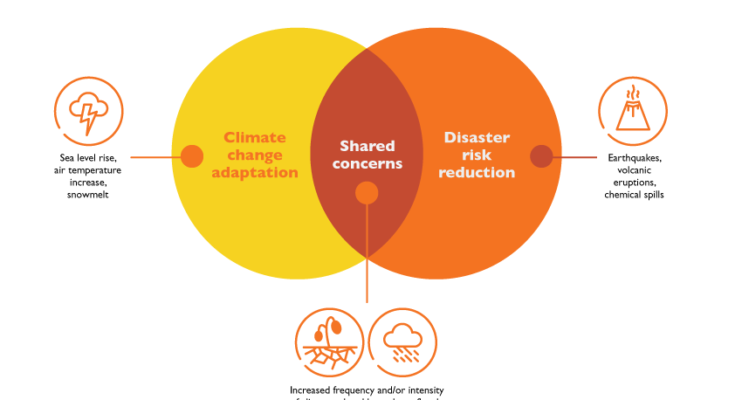Two major insurers have announced that they will no longer offer new home insurance policies in California. State Farm and Allstate said that they are making the move due to the increasing risk of wildfires and other climate-related disasters.
Climate risks refer to the potential negative impacts and uncertainties associated with climate change and extreme weather events. These risks arise from the changing climate patterns, including rising global temperatures, sea-level rise, changing precipitation patterns, increased frequency and intensity of storms, and other climatic factors. Climate risks can have wide-ranging consequences for ecosystems, economies, infrastructure, and human well-being.
⇒Join us on Telegram for more Sure and Accurate football-winning tips every day...click here
Here are some examples of climate risks:

- Extreme Weather Events: Climate change is leading to more frequent and intense weather events such as hurricanes, heatwaves, droughts, and heavy rainfall. These events can cause property damage, disrupt supply chains, and lead to economic losses.
- Sea-Level Rise: As global temperatures increase, glaciers and ice caps melt, causing sea levels to rise. This poses a significant risk to coastal communities, infrastructure, and ecosystems, increasing the likelihood of coastal flooding, erosion, and saltwater intrusion.
- Changing Precipitation Patterns: Climate change can alter rainfall patterns, leading to more frequent and severe droughts or floods. Droughts can impact agriculture, water availability, and energy production, while floods can damage infrastructure and result in loss of life.
- Shifts in Ecosystems: Climate change can disrupt ecosystems by affecting species distributions, habitats, and biodiversity. This can have consequences for agriculture, fisheries, and overall ecosystem functioning, impacting food security and ecosystem services.
- Health Impacts: Climate change can exacerbate health risks, including heat-related illnesses, the spread of infectious diseases, and mental health issues due to increased stress and displacement.
The decision by State Farm and Allstate is a sign of the growing challenges that climate change is posing to the insurance industry. In recent years, there has been a sharp increase in the number of wildfires and other extreme weather events in California. These events have caused billions of dollars in damage, and have made it more expensive for insurers to cover homes in the state.
State Farm and Allstate are not the first insurers to pull out of California. In 2022, American International Group (AIG) announced that it would no longer offer new home insurance policies in the state. And in 2021, Farmers Insurance said that it would no longer offer new home insurance policies in certain high-risk areas of California.
The decision by State Farm, Allstate, and AIG to pull out of California is a major blow to the state’s homeowners. It will make it more difficult for people to find affordable home insurance, and could lead to higher premiums for those who do have coverage.
The decision by these insurers is also a sign of the growing financial risks that climate change is posing to the insurance industry. As the frequency and severity of extreme weather events continue to increase, insurers are facing higher claims costs. This could lead to higher premiums for all homeowners, regardless of where they live.
The decision by State Farm, Allstate, and AIG to pull out of California is a wake-up call for policymakers and homeowners. It is a sign that climate change is a real and present danger, and that we need to take action to address it.
What can homeowners do?
If you are a homeowner in California, there are a few things you can do to protect yourself from the risks of climate change.
- Make sure you have adequate home insurance coverage.
- Consider purchasing a home warranty.
- Make sure your home is properly insured for its value.
- Take steps to mitigate the risk of wildfires, such as clearing brush and debris from around your home.
- Stay informed about the latest climate change news and updates.
Despite the risks and challenges associated with climate change, there are also potential benefits that can arise from addressing climate risks and transitioning to a more sustainable future:
- Renewable Energy Opportunities: Transitioning from fossil fuels to renewable energy sources such as solar, wind, and hydroelectric power can reduce greenhouse gas emissions, improve air quality, and create new job opportunities in the clean energy sector.
- Enhanced Resilience: Investing in climate adaptation and resilience measures can help communities and businesses withstand and recover from the impacts of climate change. This includes building infrastructure that can withstand extreme weather events and implementing nature-based solutions like reforestation and wetland restoration.
- Economic Opportunities: The transition to a low-carbon economy can stimulate innovation, create green jobs, and drive economic growth in sectors such as renewable energy, energy efficiency, sustainable agriculture, and green technologies.
- Improved Public Health: Taking action to mitigate climate change can improve public health outcomes by reducing air pollution, promoting active transportation, and enhancing access to clean water and sanitation.
- Preservation of Ecosystems and Biodiversity: Climate action can help protect and restore ecosystems, preserving biodiversity and the ecosystem services they provide, such as water filtration, carbon sequestration, and climate regulation.
By recognizing and addressing climate risks, societies can work towards minimizing the negative impacts of climate change while capitalizing on the potential benefits of a sustainable and resilient future.



